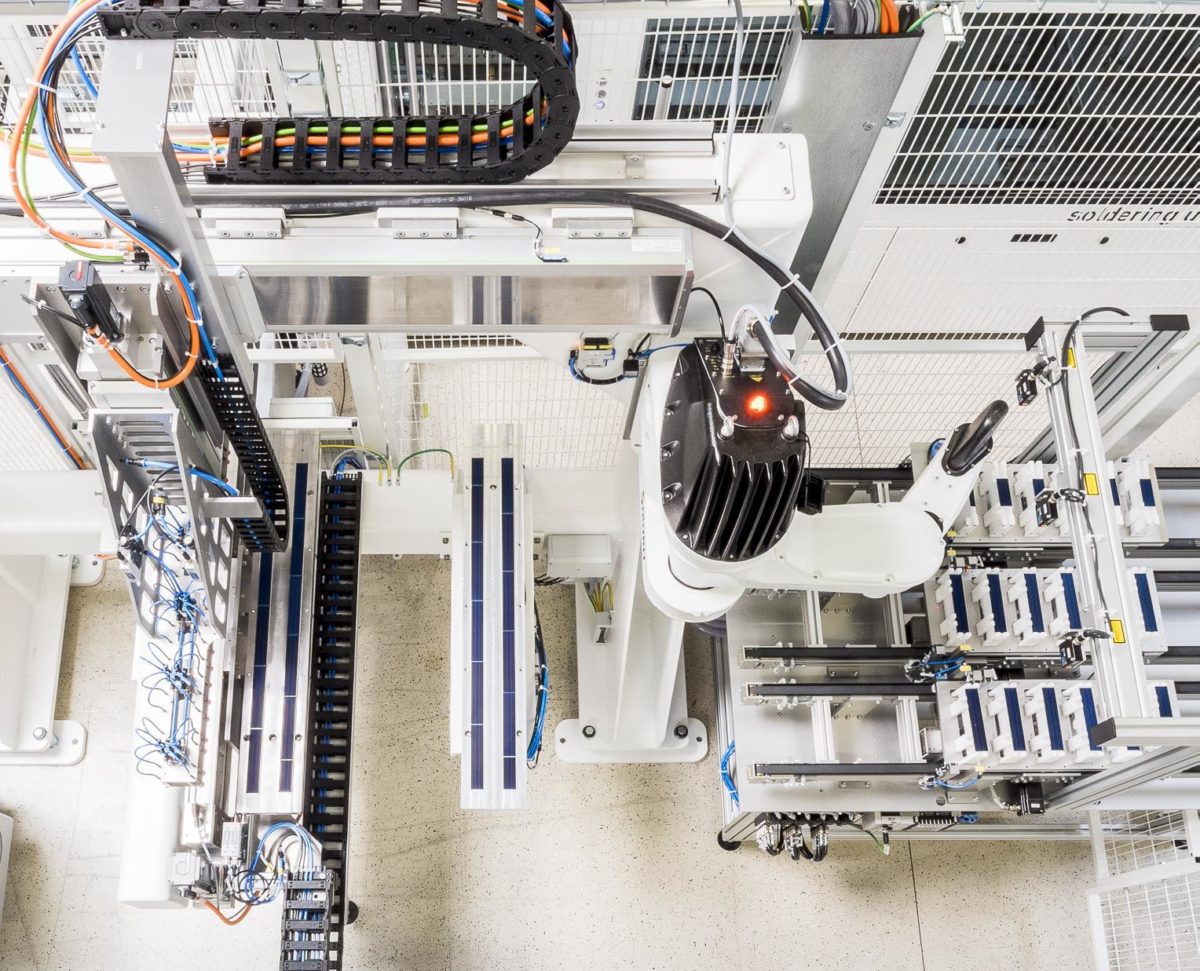Shingled modules – where silicon solar cells are cut into five or six strips and interconnected using an electrically conductive adhesive – have been around for a while, and though never a mainstream solution they have kept the industry’s attention thanks to potential for flexibility in the size and shape of modules, better aesthetic appearance and improved tolerance to shading.
Recent interest in building integrated and other applications for PV beyond standard rooftop or ground-mounted modules, as well as concerns over the use of lead and improvements in electrically conductive adhesives, have led to renewed interest in the approach lately.
Last month Germany’s Fraunhofer Insititute for Solar Energy Systems (ISE) introduced a new layout for shingled cells, developed in collaboration with interconnection equipment supplier M10, which it calls Matrix Shingle Technology. The approach sees cell strips laid out in staggered rows, similar to how bricks are placed in a wall. Fraunhofer ISE claims that this leads to higher module efficiencies and even better shading tolerance, and is now setting about evaluating the technology’s performance in various installation scenarios.
The institute’s latest work, published in Progress in Photovoltaics, demonstrates that Matrix shingled modules offer a significant advantage in certain shading conditions. The institute conducted lab experiments for various shading scenarios by partially covering modules with black sheeting and then testing them in a solar simulator.
Where shade moves diagonally across a module, and in conditions with random shading, the Matrix modules were shown to perform significantly better. Under diagonal shading, the group recorded up to 73.8% power increase, and under random shading as much as 96.5% more power, compared to a state-of-the-art shingled module using the standard stringing approach.
Current extraction
The group explained that its approach allows more electric current to flow out of the module, without being blocked by shaded areas. “This is caused by currents bypassing the shaded area via the busbar metallization crosswise to the normal current flow. “Besides higher power outputs, this leads to significantly less MPPs where reverse biasing of parts of the module increases the risk of hotspot occurrence.”
While shingled modules are already known to be less susceptible to hotspots thanks to better heat dissipation through the touching cells, the group also found a 40% reduction in the chance of parts of the module being bypassed, leading to an even lower chance of hotspots forming.
The ISE scientists further note that they expect the increased current extraction to improve energy yields for modules in power plant applications that would not have to deal with shading, although they would have to do further work to demonstrate this.
Fraunhofer ISE previously stated that it has a prototype production line for Matrix shingled cells up and running in Freiburg, and now adds that it sees the technology as particularly interesting for building or vehicle integrated PV, and other applications where frequent shading would be inevitable. “Huge potentials for solar power generation meet a huge variety of irregular shading conditions, making shading tolerance a very important aspect,” they conclude. “Above this, matrix modules fulfill other requirements like a highly aesthetic appearance without losing power due to, for example, coloring or printing patterns on the front sheet.”
This content is protected by copyright and may not be reused. If you want to cooperate with us and would like to reuse some of our content, please contact: editors@pv-magazine.com.




2 comments
By submitting this form you agree to pv magazine using your data for the purposes of publishing your comment.
Your personal data will only be disclosed or otherwise transmitted to third parties for the purposes of spam filtering or if this is necessary for technical maintenance of the website. Any other transfer to third parties will not take place unless this is justified on the basis of applicable data protection regulations or if pv magazine is legally obliged to do so.
You may revoke this consent at any time with effect for the future, in which case your personal data will be deleted immediately. Otherwise, your data will be deleted if pv magazine has processed your request or the purpose of data storage is fulfilled.
Further information on data privacy can be found in our Data Protection Policy.